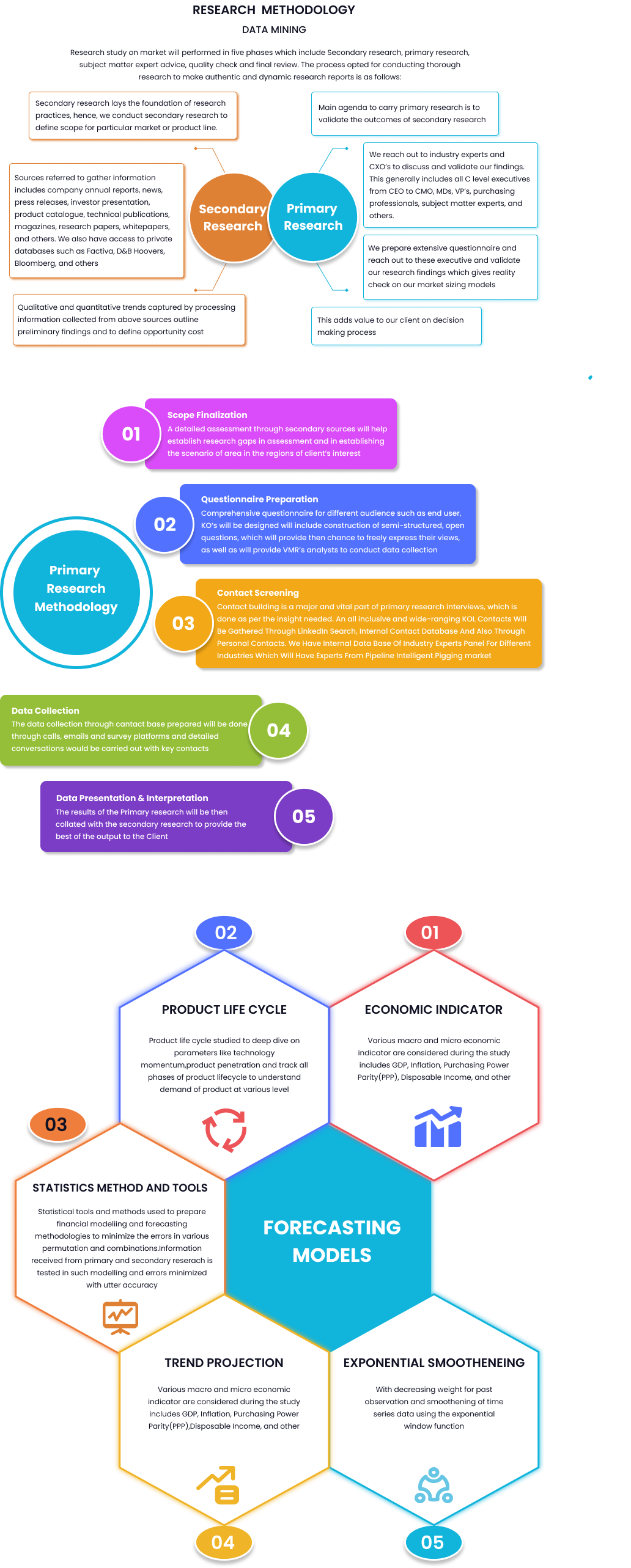
Global Molecular Spectroscopy Market By Type (Research Center, Hospital, Laboratory), By Application (Fourier Transform Infrared (FTIR) Spectroscopy Instrument, Near Infrared (NIR) Spectroscopy Instru...
Report Id: 44251 | Published Date: Jul 2024 | No. of Pages: 200 | Base Year for Estimate: Jul 2024 | Format:
Molecular spectroscopy is widely used in universities and research institutions across various scientific disciplines like chemistry, physics and biology. Many universities and research institutions have dedicated spectroscopy laboratories equipped with a range of spectroscopic instruments.
The global molecular spectroscopy market is approximately valued at USD 2.86 billion in 2024 and is projected to reach USD 3.45 billion by 2030, growing at a CAGR of 3.73% from 2024-2030. The market is being driven primarily by the pharmaceutical industry’s rapid adoption of MS technology, its penetration across multiple verticals, and its increased focus on discovering newer molecules. The pandemic also had a positive impact because researchers are using Raman spectroscopy for COVID-19 testing more frequently.
Drivers: Technological advancements, expanding applications, focus on food safety and emerging techniques.
-Advancements in detectors, lasers, and data analysis software enhance sensitivity, resolution, and speed of analysis. This allows for more accurate identification and quantification of complex molecules.
-Molecular spectroscopy is crucial in drug discovery, protein analysis, and characterizing biological samples. Growing research activity in these areas fuels market growth.
-Molecular spectroscopy helps detect food contaminants, analyze pollutants in air and water, and ensure food safety and environmental quality. This is a growing area of application.
-New spectroscopic techniques like terahertz spectroscopy offer unique capabilities for non-destructive analysis of materials and pharmaceuticals, creating new market opportunities.
Restraints: Complexity of data analysis, high costs and competition from alternative analytical techniques.
-Interpreting complex spectral data requires specialized training and expertise. A shortage of skilled personnel can hinder the utilization of these techniques in some settings.
-Molecular spectroscopy instruments can be expensive, and their operation and maintenance require specialized expertise. This can be a barrier for smaller labs or research institutions with limited budgets.
-Other analytical techniques like chromatography or mass spectrometry may offer advantages in specific applications, posing some competitive pressure on the molecular spectroscopy market.
Opportunities: Focus on wide-application-based spectroscopy systems, integration with AI & ML and cost-effectiveness.
-Developing portable and user-friendly spectroscopy systems can expand their application in field-based measurements, environmental monitoring, and on-site analysis.
-Incorporating AI and ML into data analysis can enhance peak identification, automate data interpretation, and improve the accuracy and efficiency of spectroscopic analysis.
-Developing more affordable spectroscopy instruments and offering training programs can increase accessibility and encourage wider adoption, particularly in resource-constrained settings.
Market By Molecular Spectroscopy Type Insights:
Based on technology, the market is segmented into Nuclear Magnetic Resonance, Spectroscopy, UV-visible spectroscopy, Infrared Spectroscopy, Near-Infrared Spectroscopy, Colour Measurement Spectroscopy, Raman Spectroscopy and Other Technologies. IR or Infrared spectroscopy, is expected to lead the market in 2024 due to its versatility, ease of use, cost-effectiveness, and wide range of applications in sectors such as pharmaceuticals, food testing and material science.
Market By End-Use Insights:
Based on end-use, the pharmaceutical industry is expected to dominate the spectroscopy industry in 2024, due to stringent regulations and quality control. Molecular spectroscopy is essential for identifying and characterizing drug compounds, ensuring product purity, and aiding new drug development.
Market By Region Insights:
Based on regional coverage, the market is segmented into North America, Asia-Pacific, Europe, Latin America, Middle East and Africa. North America occupies a major portion of the market owing to its strong foundation for healthcare facilities, presence of major players in the market, exceptional healthcare infrastructure and a large patient pool seeking improved cancer diagnoses.
Competitive Scenario:
Major players in the market include Thermo Fisher Scientific Inc., Bruker, PerkinElmer, Inc. Agilent Technologies, Inc., Medtronic, ABB, B&W Tek., Eurofins Scientific, Digilab Inc., Danaher, Merck KGaA, Siemens Healthcare, GmbH, Hamamatsu Photonics K.K. and HORIBA, Ltd.
Scope Of Work-Global Molecular Spectroscopy Market
Key Market Developments:
January 2021- Agilent Technologies announced the release of the Agilent Cary 3500 UV-Vis spectrophotometer, which improves performance and usability for a variety of applications, broadening its portfolio of molecular spectroscopy tools.
March 2021-The gas chromatography-mass spectrometry (GC-MS) system JMS-T200GC AccuTOF GCx Plus was introduced by Jeol Ltd. It offers high-resolution and high-sensitivity analysis for volatile and semi-volatile compounds.
October 2021-The next generation 80 MHz Fourier Transform Nuclear Magnetic Resonance (FT-NMR) benchtop spectrometer, the high-performance Fourier 80 system, was introduced by Bruker Corporation in Europe.
Frequently Asked Questions (FAQs)
What is the size of the global molecular spectroscopy market?
What are the key drivers of the molecular spectroscopy market?
Ans. Key drivers include technological advancements, expanding applications, focus on food safety and emerging techniques.
What are the major challenges in the molecular spectroscopy market?
Ans. Challenges include the complexity of data analysis, high costs and competition from alternative analytical techniques.
What are the growth opportunities in the molecular spectroscopy market?

Speak with an analyst to get exclusive insights tailored to your needs
.png)
